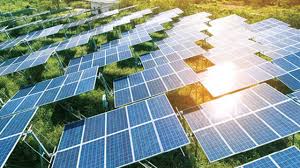
ISLAMABAD, Dec. 15 (INP-WealthPK)—Pakistan can generate a lot of clean and cheap energy by using solar photovoltaic technology to overcome the prevailing energy crisis, WealthPK reports.
According to experts, implementing on-site grid-tied, micro-generation, or net-metering solar solutions is critical for improving the country’s energy generation. The use of solar photovoltaic technology will enable the country to provide cheap and clean energy.
“Pakistan is capable of producing and generating a lot of power by using solar photovoltaic technology,” Syed Mujahid Shah, a senior electrical engineer at the National Engineering Services Pakistan (NESPAK), told WeaklthPK.
He said that solar was the least expensive energy source in Pakistan so a consumer could get a unit of electricity at a tariff as low as Rs4 to Rs5. However, he regretted that despite having excellent solar and wind power generation capabilities, the country continued to rely on expensive and polluting fossil fuels. He said that new thermal power plants were being set up in the country.
Syed Mujahid Shah said that Pakistan could generate almost one kilowatt of solar energy per square meter of its land mass for more than six hours each day.
He said that Pakistan should promote grid-tied solar solutions using photovoltaic cells through green financing. “The country has a Global Horizontal Irradiance (GHI) average of 2,337 kWh/m2. The World Bank has also noted that Pakistan has a significant potential for solar energy production, using just 0.071% of its photovoltaic that can meet its current electricity consumption needs,” he added.
The expert said that a net metering power connection, which allowed photovoltaic (PV) solar panels put on a home to generate and sell excess electricity to the national grid, was urgently needed in the country. “Through net metering, excess electricity provided to the national grid can be offset against the actual electricity used in the corresponding month, easing the financial strain of monthly electricity bills,” he said.
According to WealthPK research, the first solar power distributed energy was added to the grid through net metering in 2012. As of September 2020, about 5,502 consumers have been issued licences for net metering.
Tuaha Adil, a research economist at the Policy Research Institute of Market Economy, told Wealth that it was worrying that Pakistan was unduly dependent on energy imports since it contributed to the expanding current account deficit, which was a developing problem in the country.
He said that by increasing renewable energy, enhancing energy security and lowering carbon emissions, Pakistan could save up to $5 billion in the coming 20 years.
Pakistan is also investing in solar energy in the government and private sectors due to the country’s escalating electricity bills and intermittent power supply. However, many businesses and citizens have shifted to solar energy and many more are now contemplating it,” said Tuaha Adil.
Recently Pakistan’s Board of Investment (BOI) proposed two reforms in net metering regulations that were implemented successfully. The reforms include removing three-phase connections and removing a generation licence from NEPRA for net metering up to 25 kW. Nevertheless, these reforms have greatly shortened the time and reduced the cost of getting a net metering processing connection.
This step in the net metering regulations by the government has stimulated the microgeneration facility at the domestic and commercial level, according to WealthPK research.

































































































